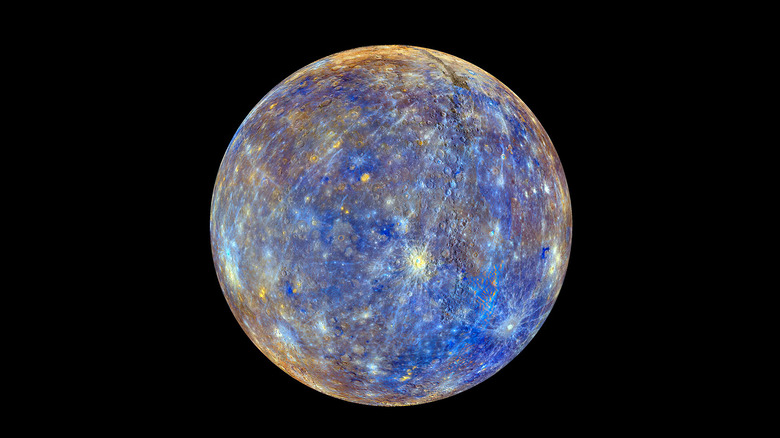BepiColombo's Third Mercury Flyby Gives Us A Glimpse At The Sun's Closest Neighbor
Despite being an icon in pop culture, our Sun's closest neighboring planet, Mercury, has had a fairly boring life when it comes to space exploration. Thus far, only two NASA missions have explored the tiny planet. Now, the ESA and JAXA's BepiColombo is giving us new glimpses of the first planet in our solar system. Three new images captured this week showcase the little planet in amazing detail.
All three of the images are captured in black and white and are relatively small, especially compared to the large images we usually see from spacecraft like the James Webb space telescope. The entire point behind JAXA and the ESA's collaboration on BepiColombo has been based on studying the planet and trying to figure out why Mercury keeps shrinking.
While there are plenty of reasonable explanations for the shrinking, most notably that the core of the planet is cooling, thus drawing the crust in upon itself, the probe hopes to provide more advanced maps of the surface of the planet, too. These maps will hopefully help scientists learn how quickly Mercury is shrinking, as well as insight into how that is actually working as well.

This latest flyby and capture of Mercury images come just before the spacecraft enters the next part of its journey. This next sequence I especially challenging, the ESA says, as it will rely heavily on increasing the use of solar electric propulsion through thrust arcs to brake against the gravitational pull of the Sun. It's Mercury's proximity to the Sun that has made Mercury so difficult to study, as the glare and heat from our star is a big contender that probes in this area have to deal with.
While we have seen success with the BepiColombo, and the Parker Solar Probe continues to break records as it touches the Sun, surviving that extreme radiation and glare isn't easy. The ESA says that the frequency and duration of these arc thrusts will become longer as the probe continues its journey. The goal is to release the ESA's Mercury Planetary Orbiter and the JAXA Mercury Magnetospheric Orbiter modules into orbit around the first planet in our solar system.
That main mission isn't expected to begin until early 2026. For now, we'll have to suffice with these beautiful and moody-looking Mercury images captured as the probe completes yet another flyby (the third of six).
